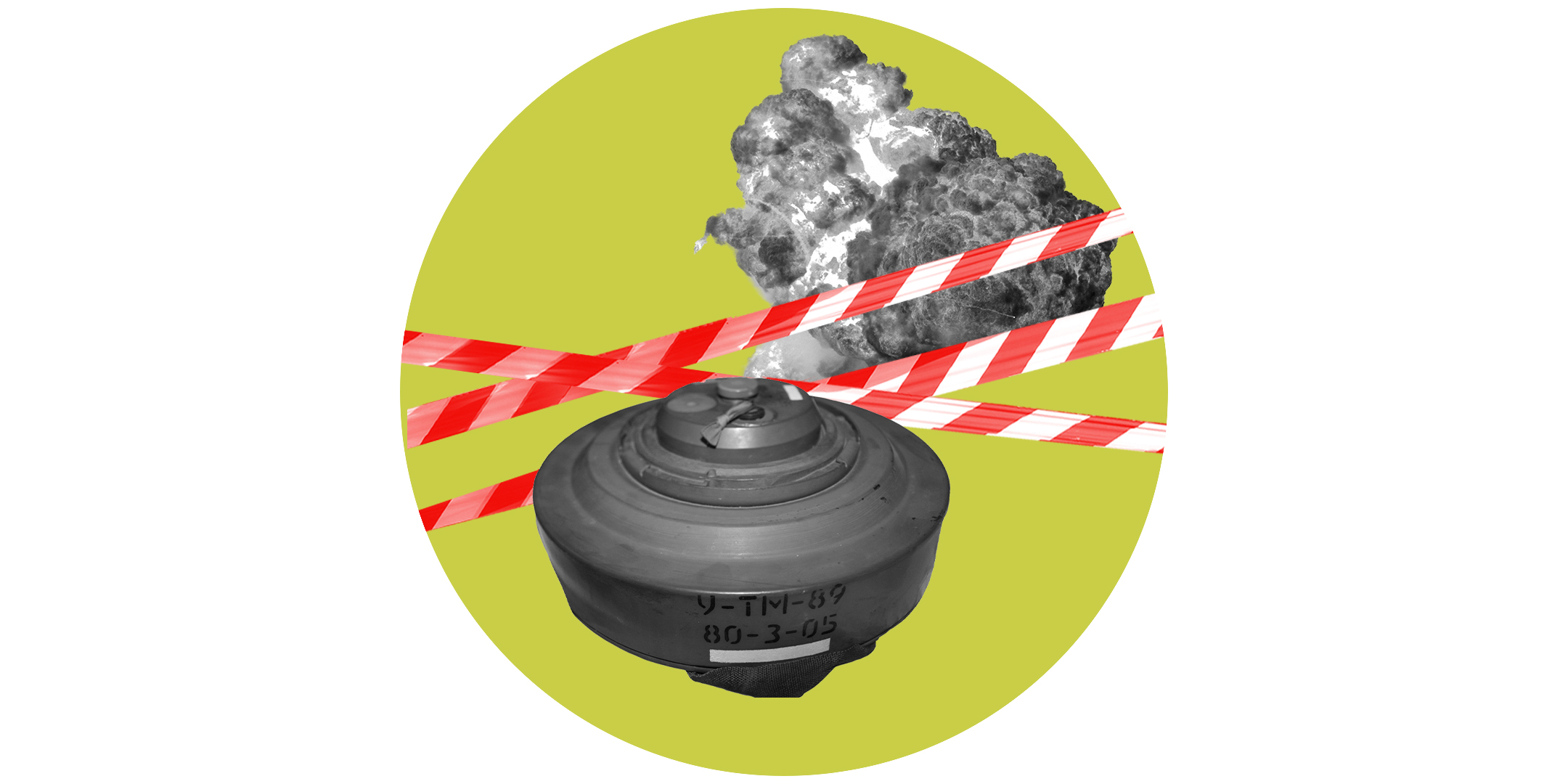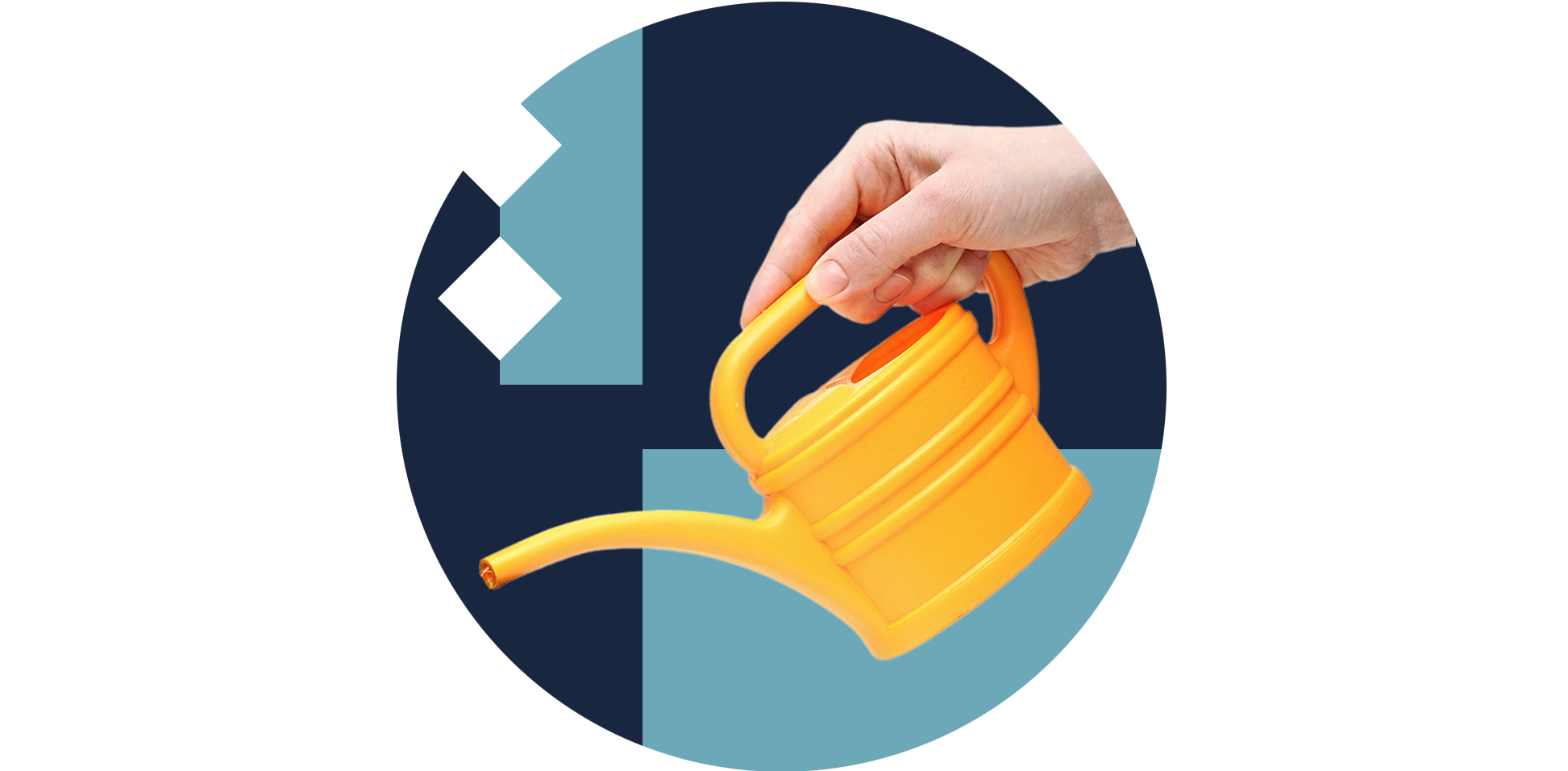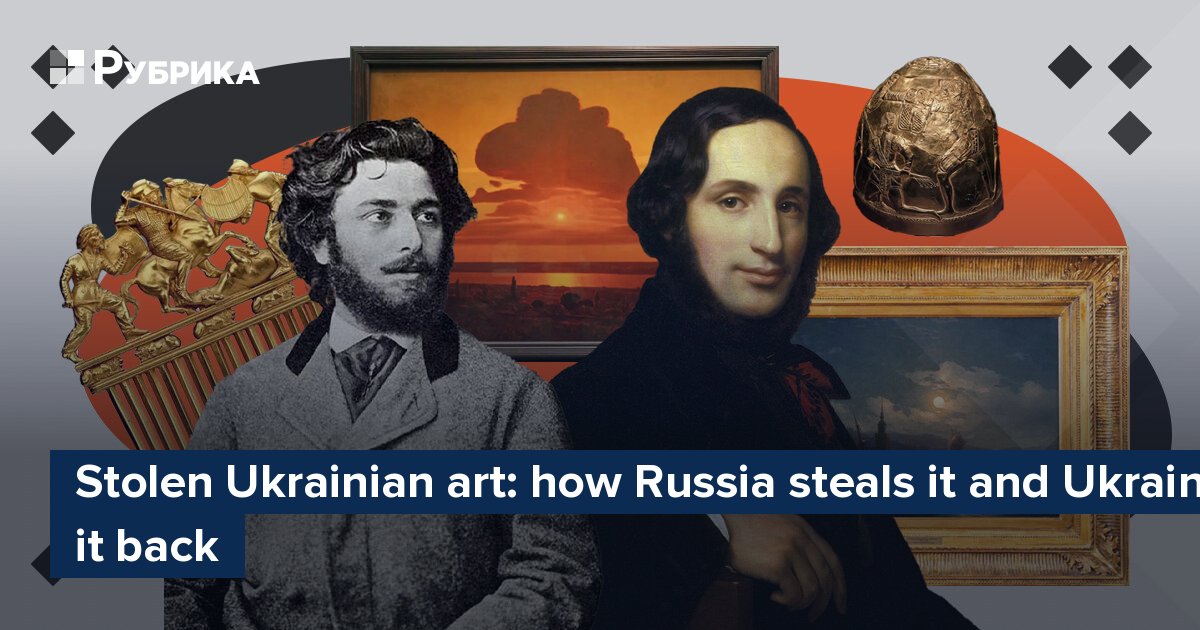
Throughout its imperial and Soviet history, Russia was appropriating or destroying the cultures of its colonized neighbors by stealing their art. The northern empire used this method in Ukraine to rewrite the past and suggest that the Ukrainian culture — and, by extension, people — never existed. Rubryka explains how Russia's same practice continued into the 21st century with its invasions and occupation of the Ukrainian territory, and how Ukrainians are fighting to return their art.
How Russia has colonized and plundered Ukrainian art
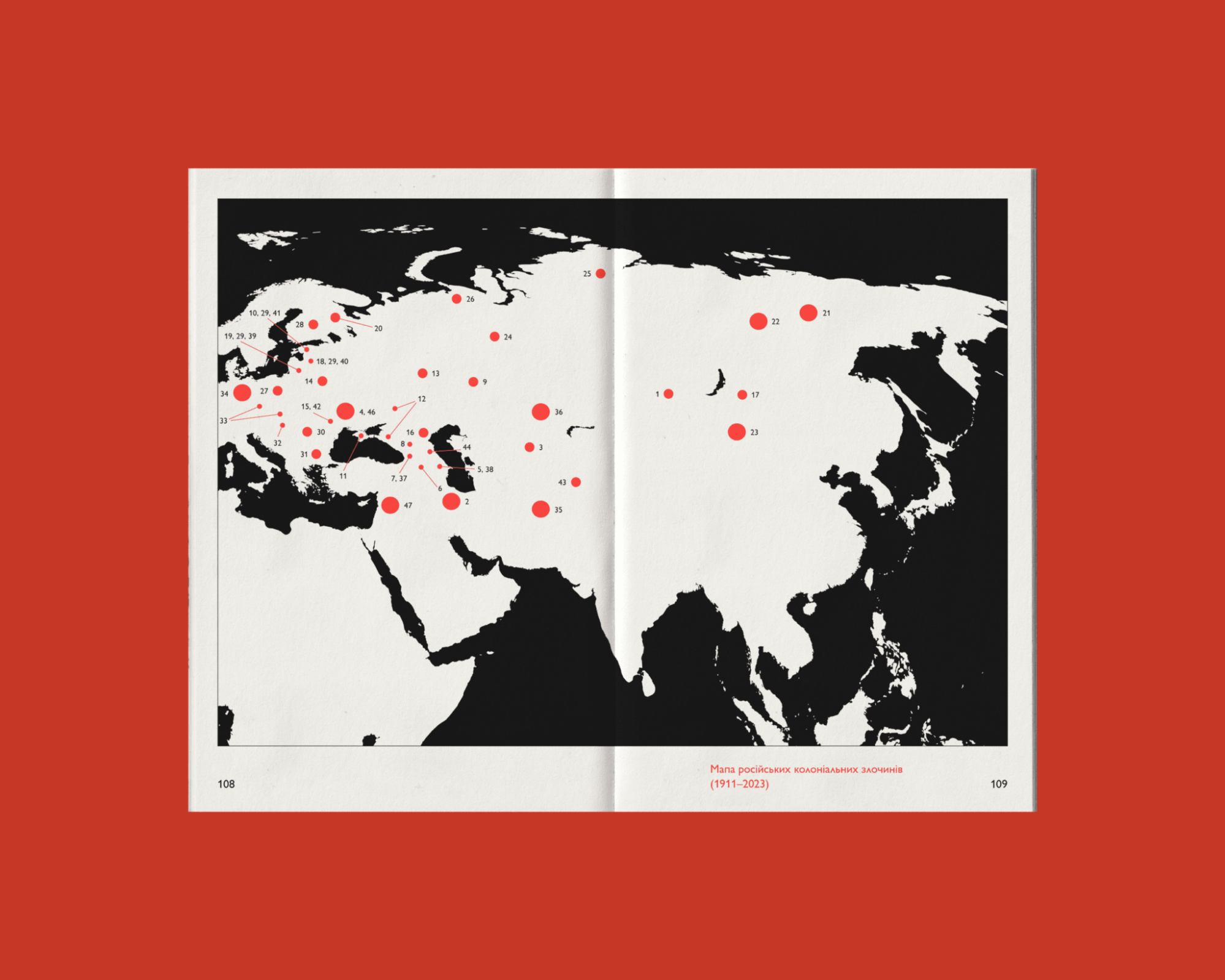
The map of Russian colonial crimes (1911–2023) from "Russian Colonialism," the illustrated book by Ukrainian journalist Maksym Eristavi about 48 recent Russian invasions of other countries. Photo: DTF Magazine
The modern-day Russian Federation is the last colonizing empire that remains intact today. Unlike Western empires with overseas colonies, it managed to keep the occupied nations, such as Ichkeria, Tatarstan, Dagestan, and more, under its control even after the collapse of the Soviet Union. Since countries like Ukraine broke free from the Soviet occupation and restored their independence in the 1990s, Russia has nurtured expansionist ambitions to return "what it lost," invading Georgia in 2008 and Ukraine in 2014 and 2022.
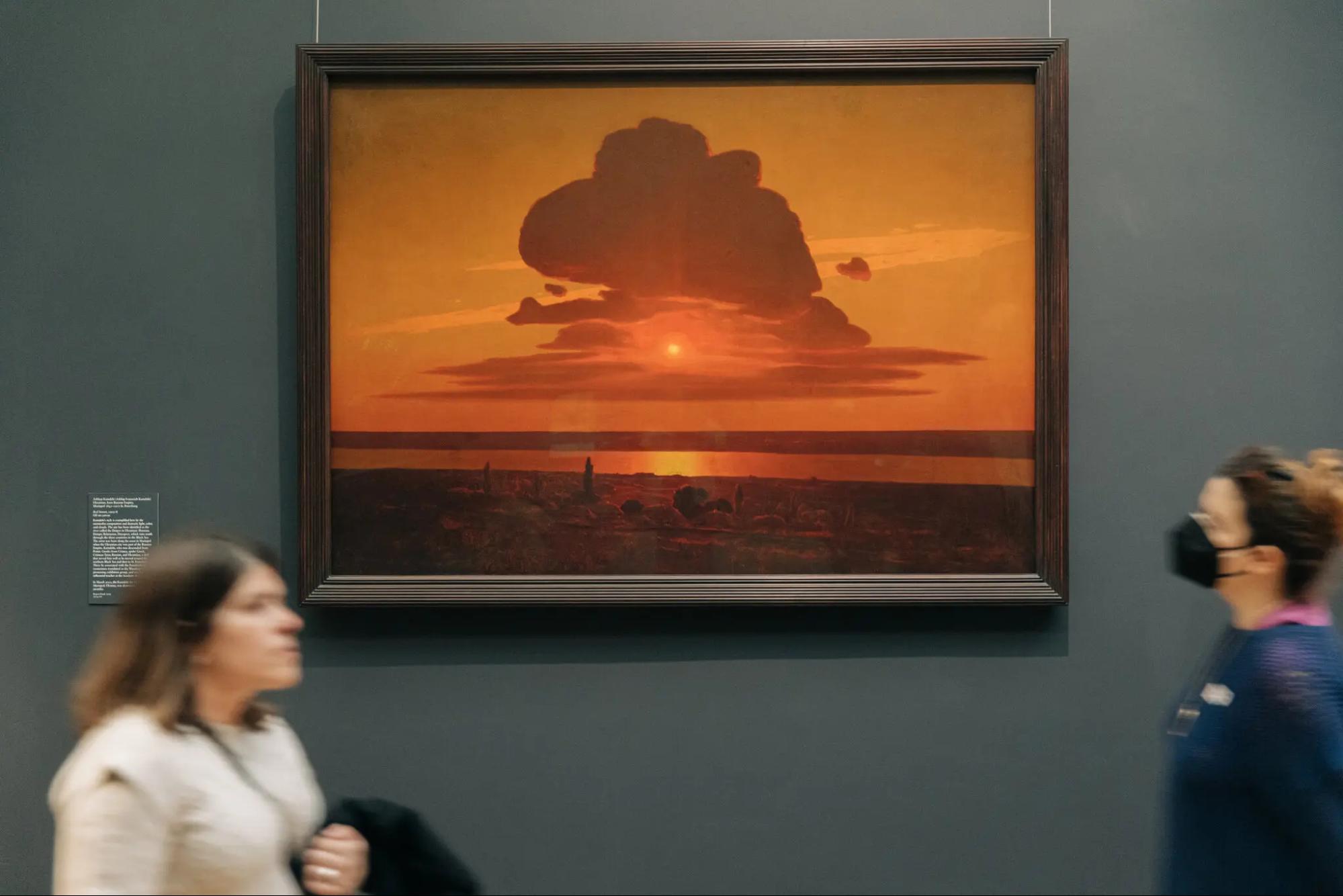
The Metropolitan Museum of Art in New York updated the descriptions for paintings of Ukrainian artists, who used to be labeled as "Russian." Among them is Arkhyp Kuindzhi's "Red Sunset," 1905–8. Photo: Jeenah Moon/ The New York Times
For over 300 years, Russia has viewed Ukraine as its integral part, denying the existence of the Ukrainian language and identity. As the Russian Empire and USSR, it exploited Ukrainian culture, including art, claiming Ukrainian intellectuals, artists, and writers and their works as its own. Many artists are still known worldwide as "Russian" because of the colonial policies Russia used to appropriate the achievements of Ukrainian talents. In our article, Ukrainian art: Meet five famous artists from Ukraine, we share some names Russia attempted to steal.

Scythian comb with a battle scene from the Solokha kurgan in Ukraine, late 5th-4th century BCE, is now in the State Hermitage Museum in St. Petersburg, Russia
Besides building the legacy of the appropriator, repressor, or outright killer of Ukrainian artists, Russia also plundered Ukrainian art heritage, physically removing the works and artifacts from Ukraine, many of which are now on display in Russian museums. One of these artifacts is the famous Scythian gold comb, excavated from the grand Solokha kurgan in the Zaporizhzhia region of modern-day Ukraine in 1912-1913. This comb and other Scythian artifacts were forcibly taken to the Hermitage Museum in Russia.
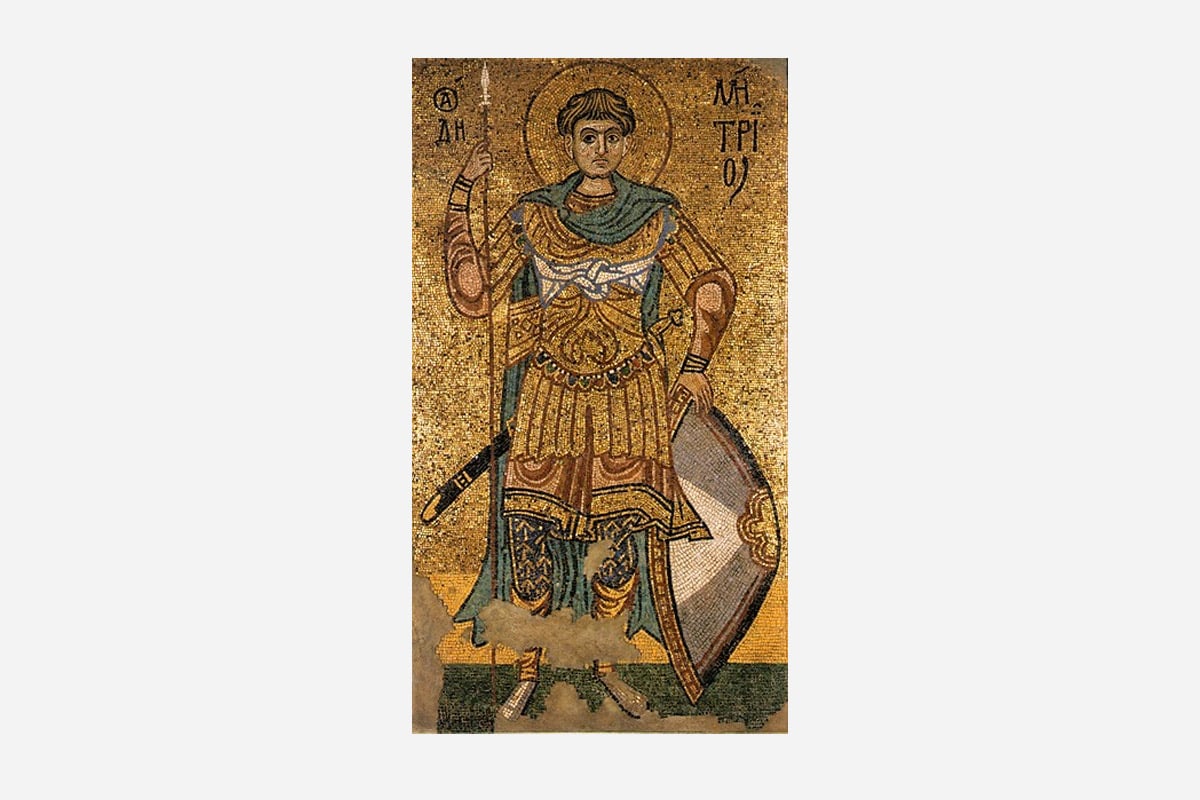
Mosaic from St. Michael's Cathedral in Kyiv with the image of St. Demetrius of Thessalonica, early 12th century
Another example is the mosaic of St. Demetrius of Thessalonica, which used to be housed in Kyiv's St. Michael's Church, along with other valuable frescoes and artifacts. This 12th-century Ukrainian treasure ended up in the Tretyakov Gallery in 1938 after it was taken to Moscow under the guise of a temporary loan for an exhibition and was never returned to Ukraine. While Ukrainian historians managed to recover some fragments, the most significant pieces remain stolen and displayed in Russia.
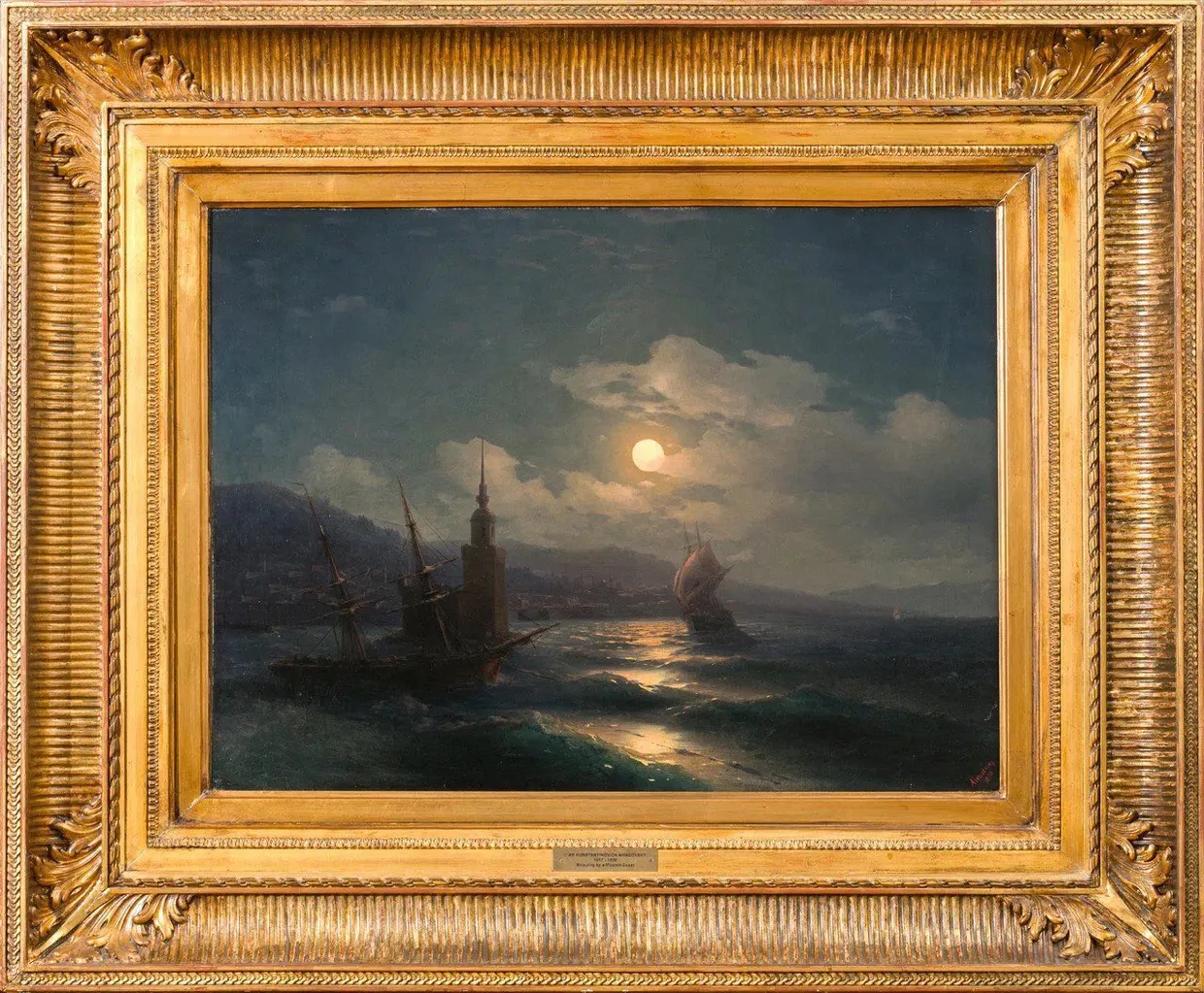
Moonlit Night by Ivan Aivazovsky, 1878, was stolen in 2014 during the Russian occupation of Crimea. Photo: Gyunduz Mamedov/X
Modern-day Russia continued this pattern in 2014 when it occupied the Crimean Peninsula. Local Ukrainian prosecutors said paintings of the Museum Fund of the 18th and 19th-century Ukrainian artists, including "Moonlit Night" by Ivan Aivazovsky, "Forest Road" by Ivan Shyshkin, "The Swamp" by Isaak Levitan, and others, were illegally transferred to another museum in occupied territory. Interpol, the international police organization, put the 52 stolen paintings by Ukrainian artists on the wanted list. In February 2024, Aivazovsky's "Moonlit Night" appeared on a Moscow auction house list and sold for almost $1 million. Other paintings' whereabouts are yet to be discovered.
How Russia is stealing Ukrainian art today
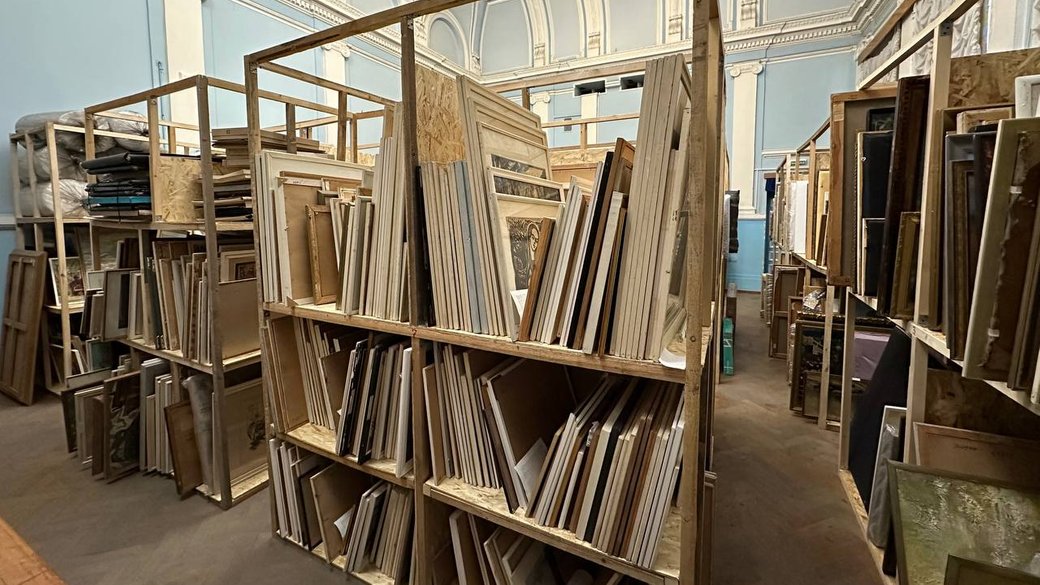
The Tavryda Central Museum lecture hall in the occupied city of Simferopol houses works of art stolen from the Kherson Art Museum, April 1, 2023. Photo: Russian propaganda media
Current history shows Russia continued its policy of looting Ukrainian art. During the full-scale war, which has been ongoing since 2022, Russian forces have been systemically stealing art pieces from Ukrainian museums in cities under their military occupation. Over 480,000 pieces of art have been taken, according to Ukraine's Ministry of Culture and Information Policy. Museums known to have lost the entire collections are ones in the captured Ukrainian cities of Melitopol, Mariupol, and the liberated city of Kherson, which used to be under Russian occupation from March to November 2022.
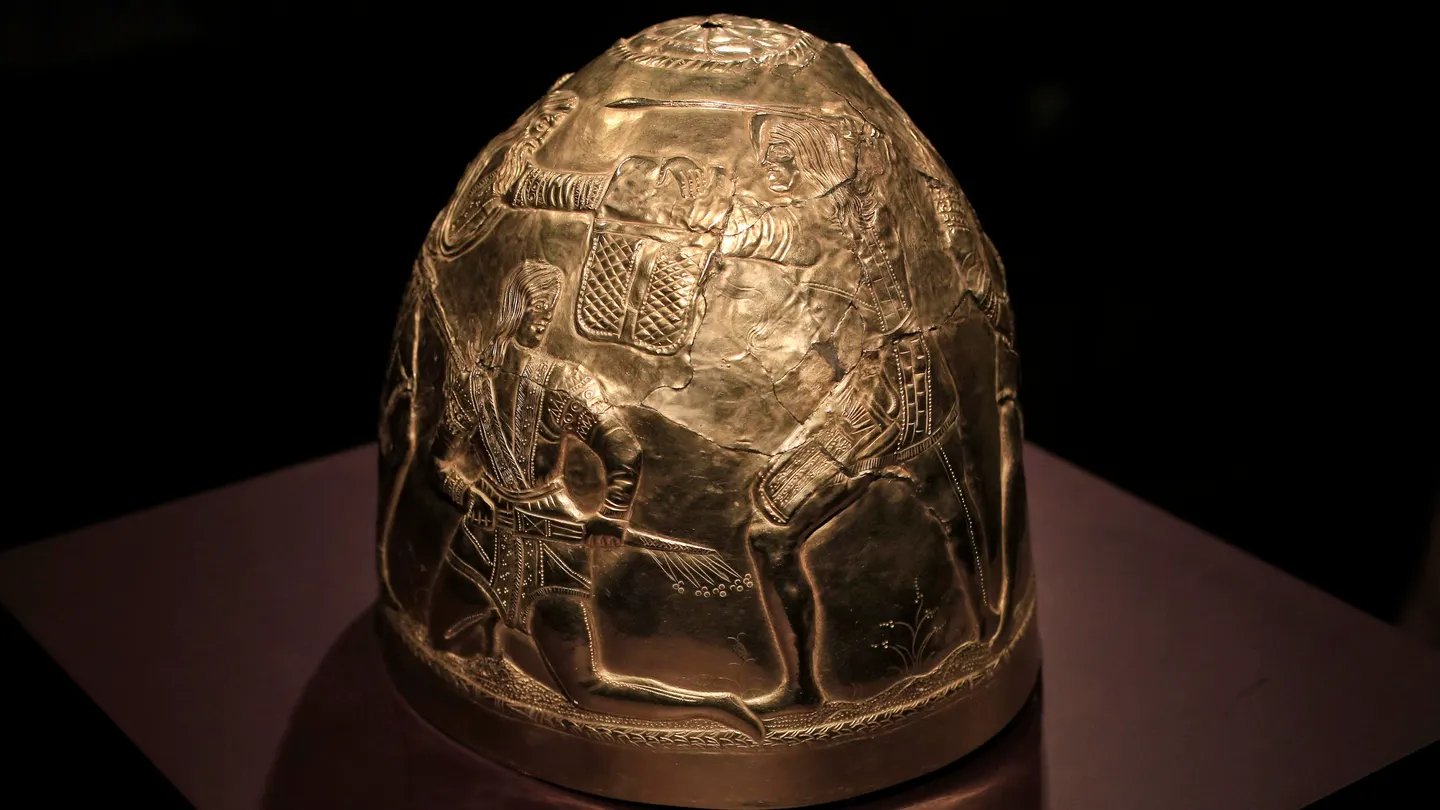
Russian forces stole a 4th-century gold helmet worn in the Scythian Kingdom. Photo: Associated Press
In their rampage across the Ukrainian south, Russian forces stole Scythian golden jewelry, including a 4th-century helmet worth millions, from the Melitopol Museum of Local History. Witnesses reported soldiers guarded a man in a white lab coat who carefully extracted priceless artifacts using gloves and tweezers. In Mariupol, Russians robbed the city's three leading museums, taking over 2,000 pieces of art, including the valuable works by Ukrainian artists Arkhyp Kuindzhi and Ivan Aivazovsky, to the occupied city of Donetsk.
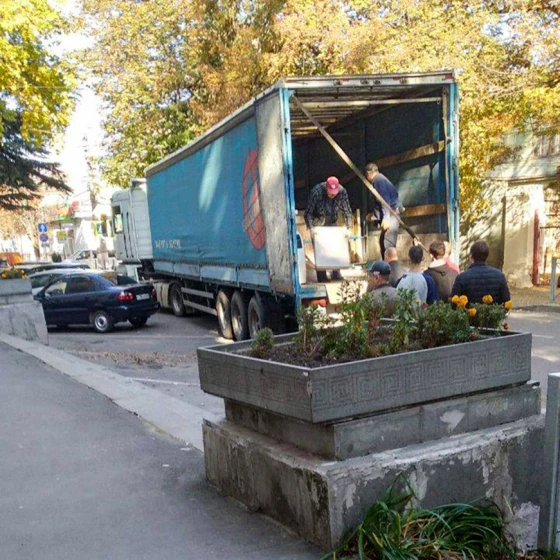
Russians load stolen artwork from Oleksii Shovkunenko Art Museum into the back of a truck in November 2022. Photo: Kherson Art Museum
Russian soldiers also picked two museums in Kherson clean. They stole around 10,000 art pieces out of a 13,500 collection of Oleksii Shovkunenko Art Museum and 28,000 artifacts — ancient coins, Greek sculptures, Scythian jewelry — from the Regional Museum of Local Lore. Russians even grabbed hard drives with the museum's catalog so that employees couldn't identify the total damage to their exposition.
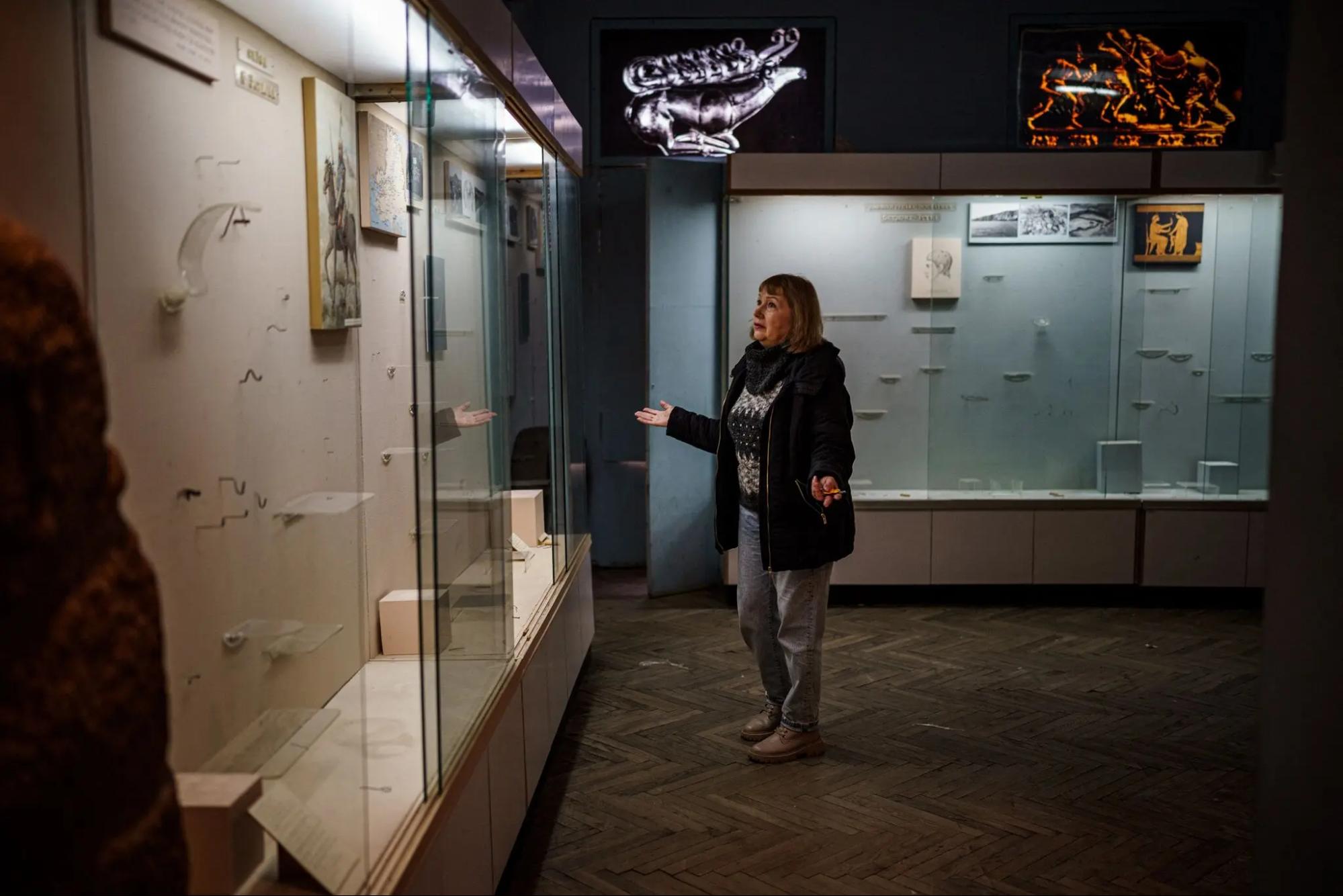
Olha Honcharova, the temporary director, showed empty glass display cases at the Kherson Museum of Local Lore in December. Photo: Dimitar Dilkoff/Agence France-Presse
Katharyn Hanson, the research chief at the Smithsonian Cultural Rescue Initiative, and her colleagues have investigated the Russian theft cases since the start of the full-scale invasion. They verified that the looting was not "random or spontaneous acts by Russian soldiers." Hanson stated, "Our research suggests that this looting is state-sponsored by Russia."

A shattered display case at the Kherson Regional History Museum. Photo: Lynsey Addario/ The New York Times
The New York Times journalists who talked to specialists from The Art Loss Register, a British organization that traces stolen art, including stolen Ukrainian art, also reported, "International art experts say the plundering [of Ukrainian museums] may be the single biggest collective art heist since the Nazis pillaged Europe in World War II."
What Ukrainians are doing to return their art
Documenting cultural crimes
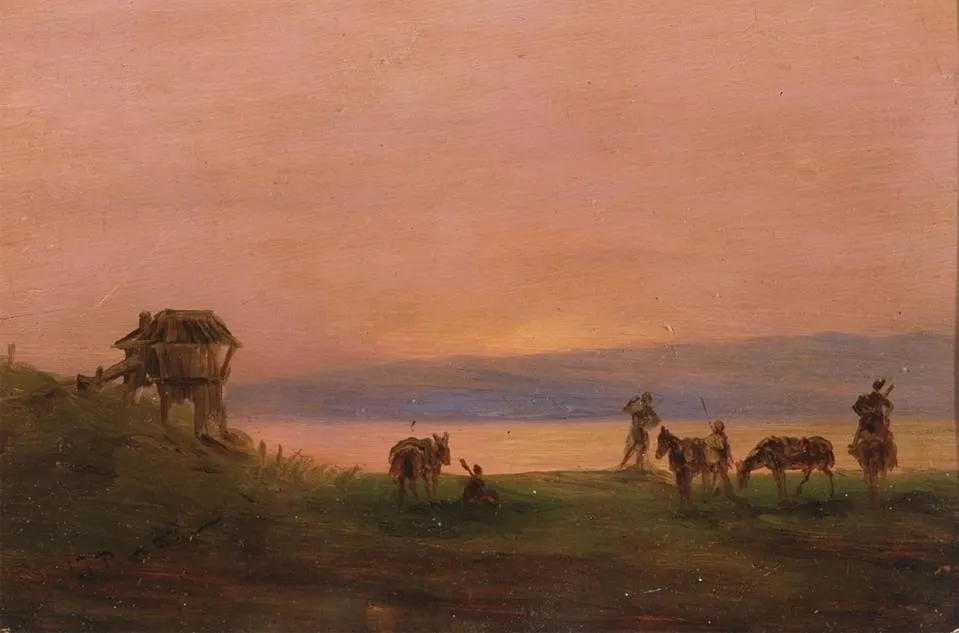
"Piquet on the Bank of the River. Sunset" by Ivan Pokhytonov is one of the paintings stolen from the Oleksii Shovkunenko Art Museum
Throughout the full-scale war, Russia has been violating international treaties, such as the 1954 Hague Convention for the Protection of Cultural Property in the Event of Armed Conflict. The document the country signed prohibits "any form of theft" from museums or other cultural sites during hostilities. While Russia is stealing Ukraine's cultural property from the occupied territories, it is also adopting special legislation to prevent any hope for their return. One of them is the law on the indivisibility of museum collections, which bans the return of valuables to where they were taken from.
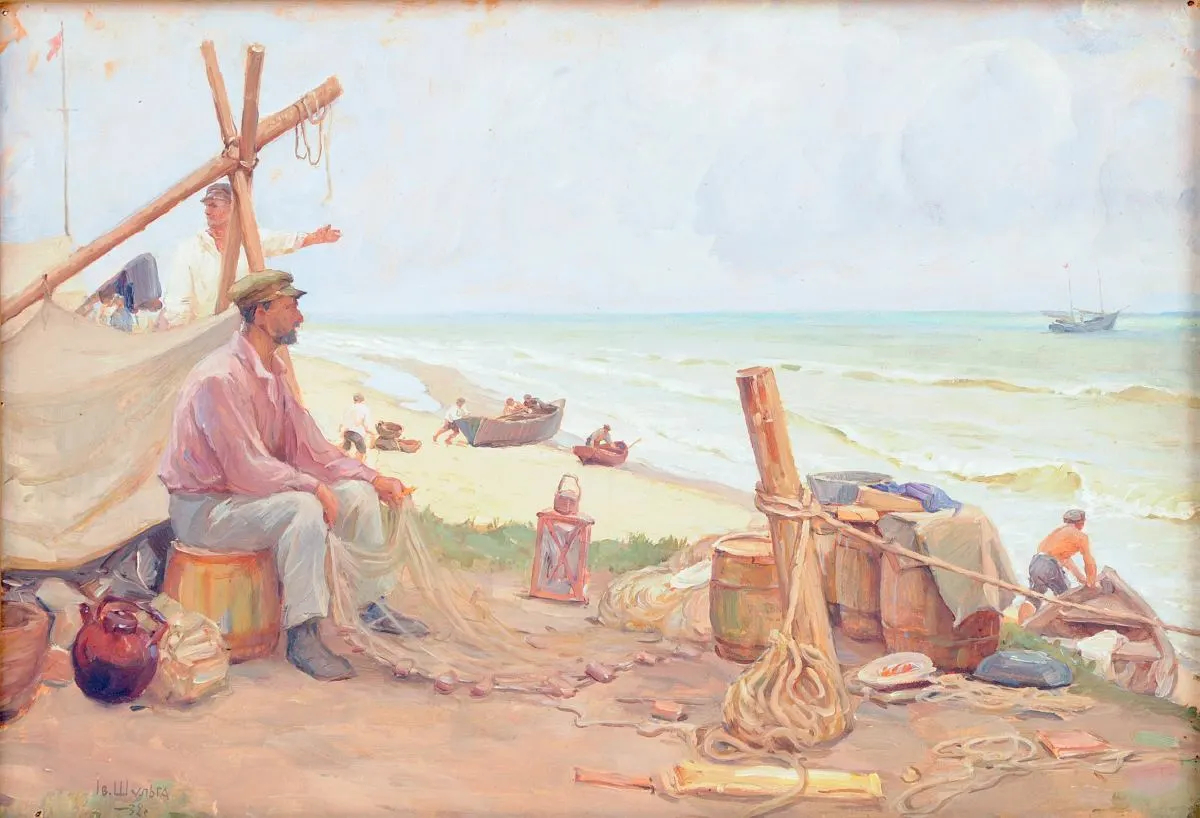
"Fishermen on the Seashore" by Ivan Shulha, 1932, was looted by Russian forces from the art museum in Kherson
Despite the ongoing war and measures Russia takes to keep the loot, Ukrainian lawyers and art historians continue collecting evidence for war crime prosecutions, compiling lists and records of stolen art, and looking for witnesses who can corroborate the findings. The hope is to retrieve Ukrainian art and receive reparations for the damage. International prosecutors who won convictions for attacks on cultural monuments in the former Yugoslavia and Mali set the needed precedents in war crimes trials.
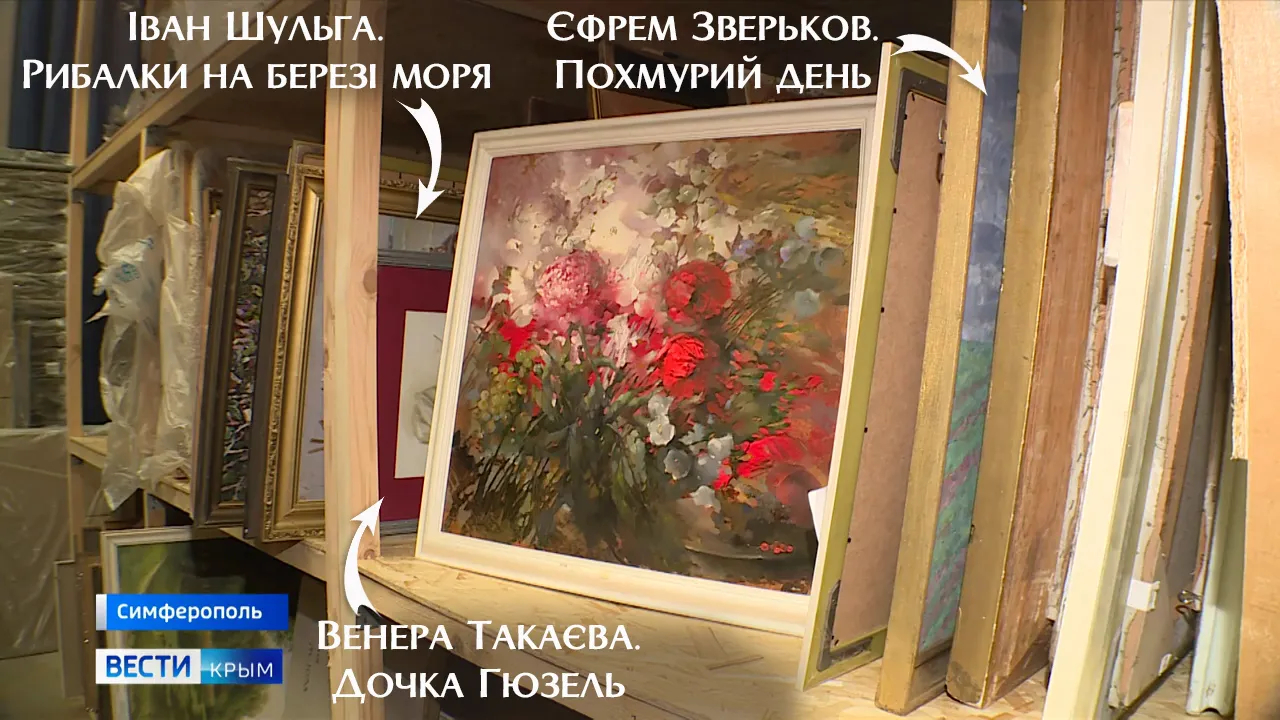
A screengrab from the video story by the Russian propaganda TV program "Vesti" that helped the Kherson Art Museum employees identify works looted by Russian forces from their collection. Photo: Kherson Art Museum
The specialists of the Oleksii Shovkunenko Art Museum in Kherson have identified 109 artworks Russian forces stole from their institution in 2022 thanks to the news video story by the Russian propaganda TV channel. Journalists were filming the "saved art" in the Central Museum of Tavryda in the occupied city of Simferopol, Crimea. Looted paintings at the museum include "Piquet on the Bank of the River. Sunset" by landscape painter Ivan Pokhytonov, "Fishermen On The Seashore" by acclaimed social realist artist Ivan Shulha, three marine art pieces by Ivan Aivazovsky, and more. The museum most recently identified the 1972 work of Ukrainian artist Yadviga Matsievska, called "Chukotka. The tundra is blooming."
Cooperation with international community and art market
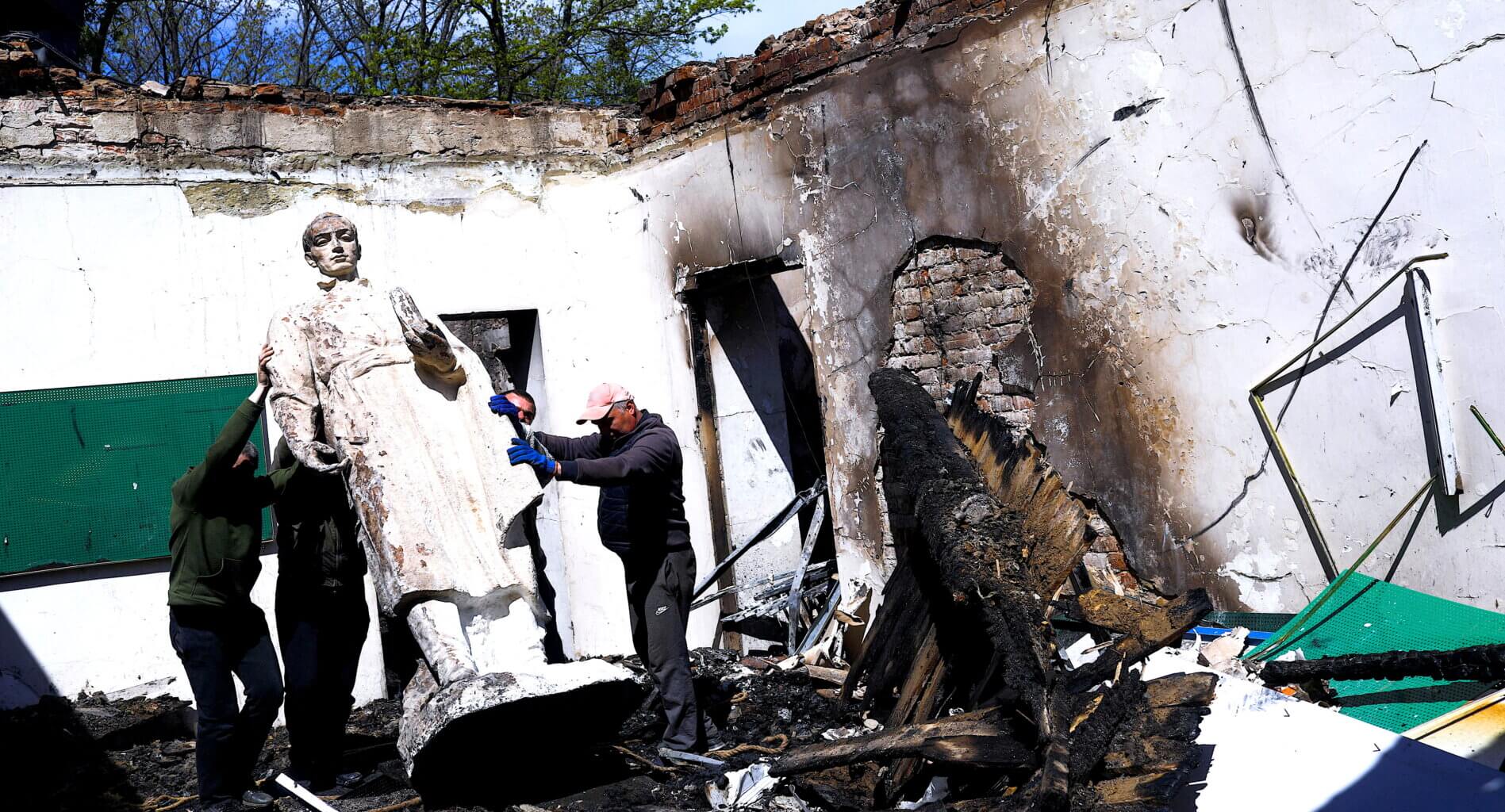
Hryhorii Skovoroda Literary Memorial Museum was destroyed by Russian forces on May 7, 2022. Photo: Ricardo Moraes/Reuters
During the two years of the full-scale war, Russia inflicted nearly $3.5 billion of damage to Ukraine's culture, according to the most recent UNESCO report. The organization also verified damage to 351 cultural sites in Ukraine since February 2022. While Russian forces continue violent attacks on Ukrainian cultural sites, Ukrainians and international experts and organizations are teaming up to record the damage and missing art and find ways to return it.
A team of archaeologists, satellite imagery experts, and other scholars from the Smithsonian Cultural Rescue Initiative is documenting the attacks on cultural monuments in Ukraine and providing local curators and historians with the needed expertise and materials to conserve the country's art collections. US President Biden's administration funds this support to collect evidence for war crimes investigations.
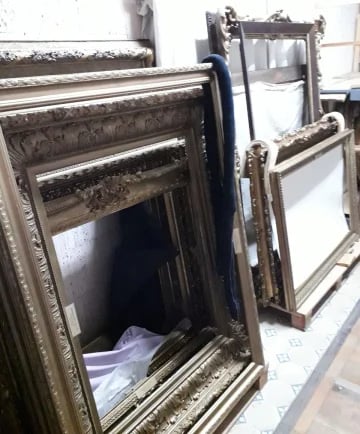
Empty picture frames left behind from paintings stolen by Russian forces from the art museum in Kherson. Photo: Kherson Art Museum
Ukrainians also work with The Art Loss Register, the world's largest private database of stolen art. The London-based organization has registered over 2,000 pieces of stolen Ukrainian art, including paintings from the Kherson Art Museum and Scythian gold from Melitopol. According to its general counsel, James Ratcliffe, the organization helps Ukraine track the artworks looted by Russian forces during the occupation. He stated, "Everyone in the art market is on red alert to look out for this material. Every auction house that sees material from Ukraine is going to start asking a lot of questions."
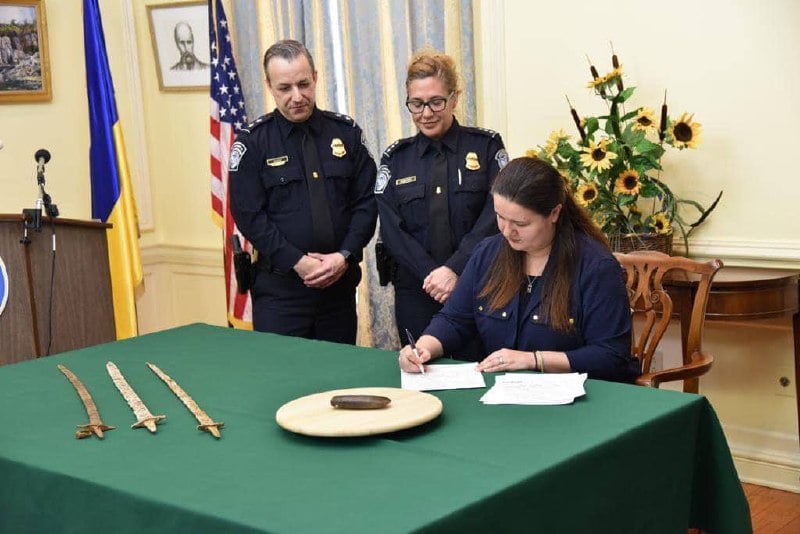
In an official ceremony, three stolen ancient swords were returned to the Ukrainian government. Ukrainian Ambassador in the US, Oksana Markarova, accepted the findings. Photo: Tkachenko.UA
The Ukrainian government is cooperating with Interpol and other law enforcement organizations worldwide to reclaim the art that may turn up abroad. Museum workers in Ukraine also handed information on missing art pieces and artifacts to the International Council of Museums, which used it to issue an emergency red list for customs and border officers to recognize missing items at the hands of traffickers. With the help of this list, US Customs and Border Protection officials discovered and confiscated three 5th-century swords, stolen from Ukraine, at the airport in New York. They were later returned to the Ukrainian Embassy in a ceremony last year.
Raising awareness about stolen Ukrainian art

The screenshot from the online platform, Museum of Stolen Art, by linza agency. Photo: https://www.museumofstolen.art/en
Ukrainian volunteers are also contributing to the reclamation of artifacts stolen from Ukraine. The linza agency independently created a social project to raise awareness about missing art and, hopefully, help hold Russia accountable for its cultural crimes. They developed an online platform, the Museum of Stolen Art, which exhibits digital copies of artworks that were stolen, destroyed, or disappeared because of Russia's full-scale war.
"This is not just an archive of stolen works but an artistic reimagining of the crime committed by Russia against the Ukrainian people," said Les Yakymchuk, co-founder and creative leader of linza agency.
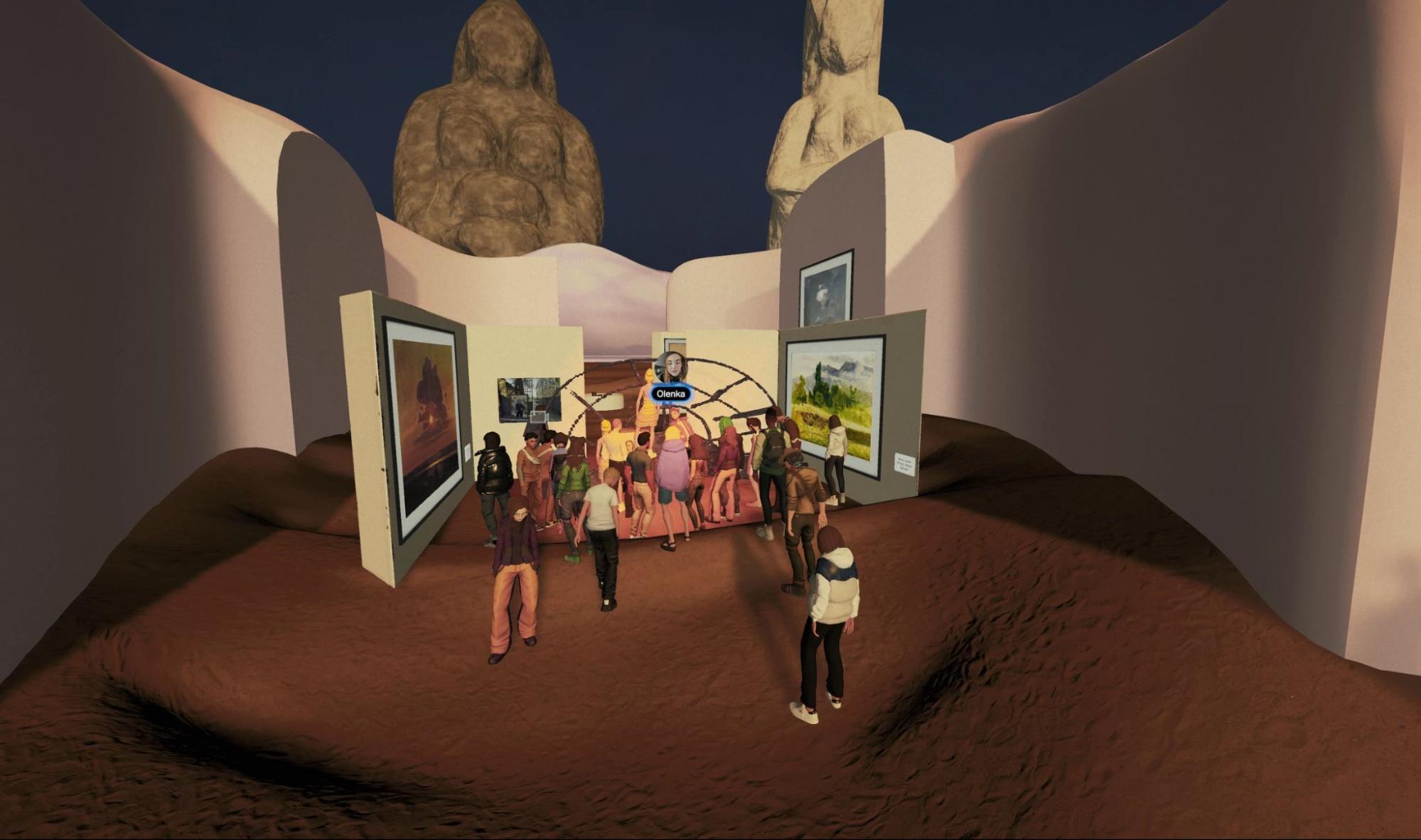
Screenshot of the online tour in the Museum of Stolen Art. Photo: linza agency
The online museum currently presents one virtual gallery with digital copies of paintings stolen from the Arkhyp Kuindzhi Art Museum in the occupied city of Mariupol. Developers plan to cooperate with art experts and museum workers to create more online rooms to display missing artifacts from Kherson, Kharkiv, Sumy, Zaporizhzhia regions, and Crimea that used to be or have been under Russian occupation.
Co-founder Les Yakymchuk added, "We hope our museum can draw global attention to this issue and influence the return of these exhibits to their homeland."



